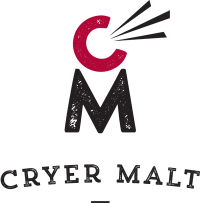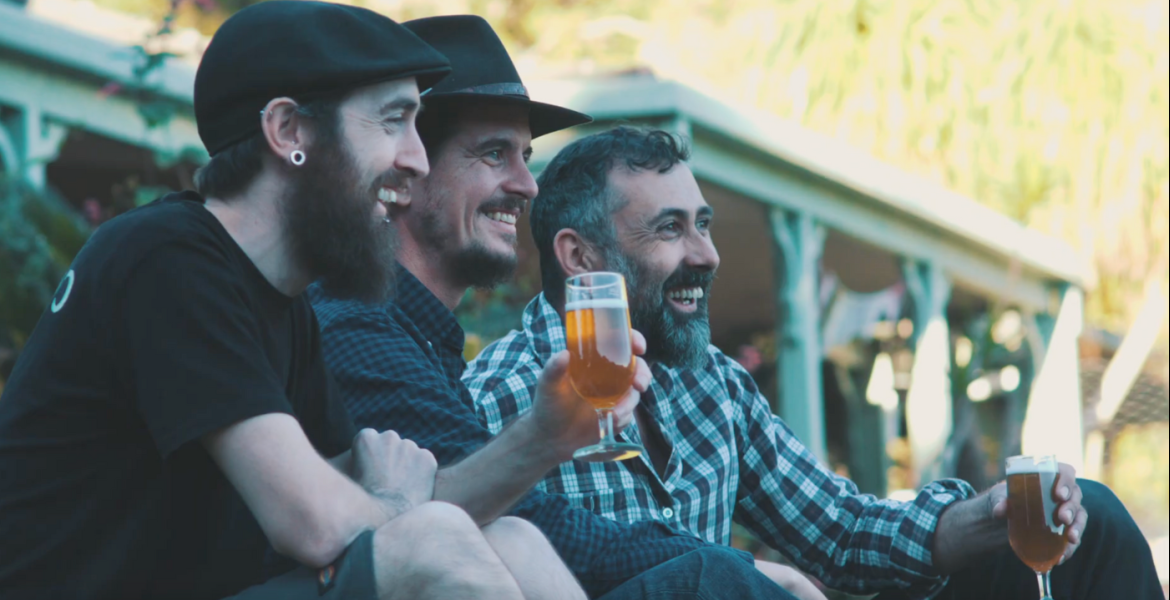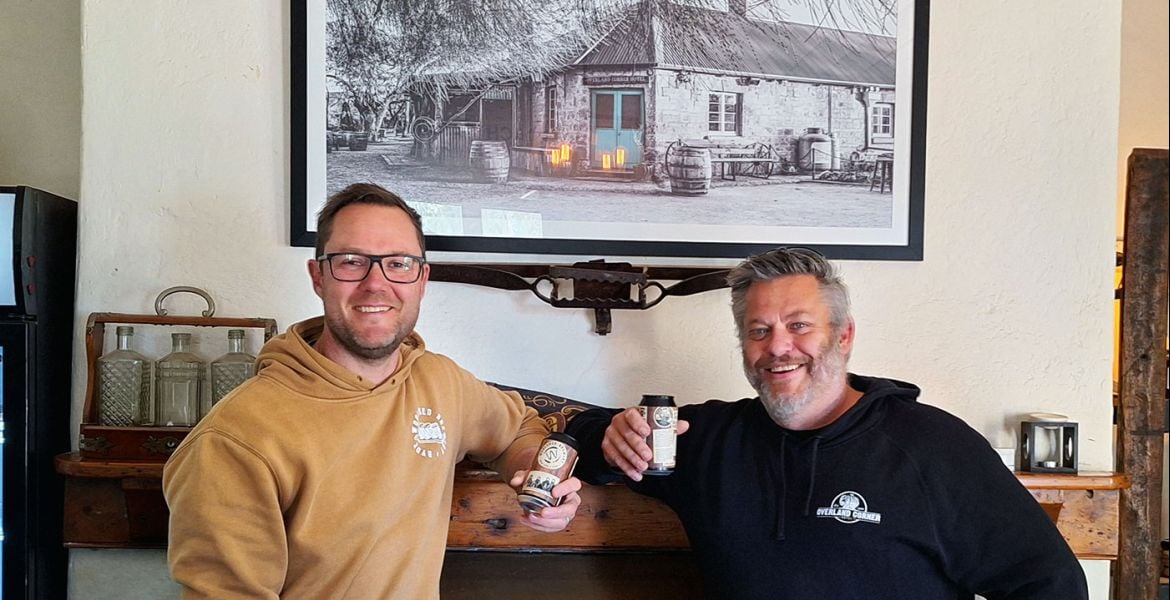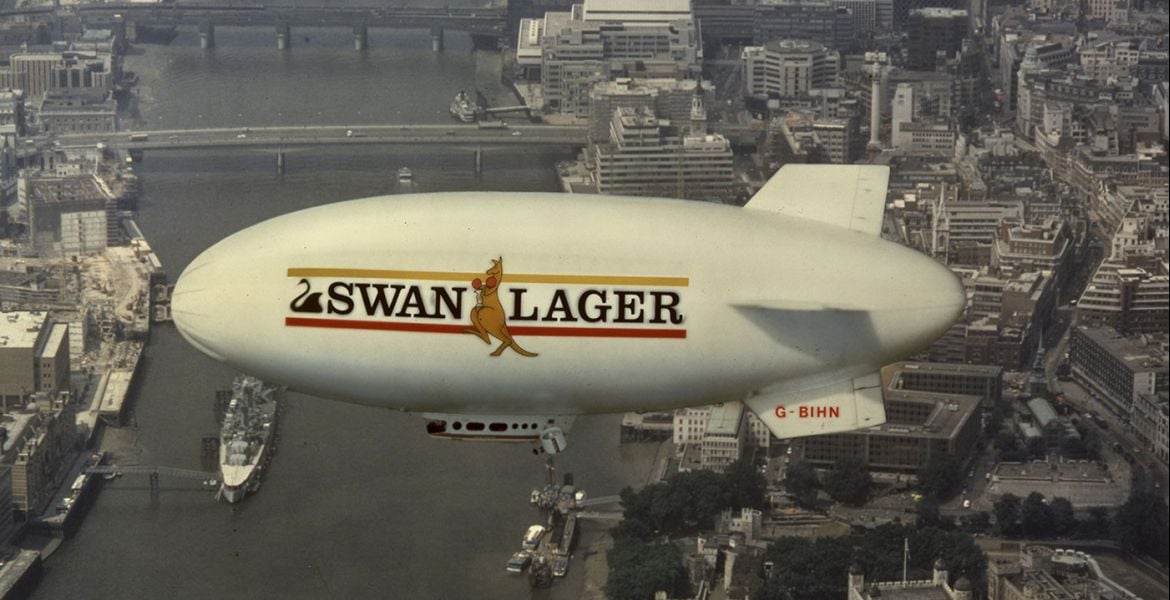In 2016, Hardie Grant published The Great Australian Beer Guide, written by The Crafty Pint's founder, James Smith. This is a slightly shortened version of the introductory chapter, which looks at the evolution of Australia's beer scene up until the mid-2010s.
The Original "Craft" Beers
Back in the early days of the colonies, breweries were local and brewed a range of beers, such as English-inspired ales, porters and stouts. The stories of the country’s first two acknowledged brewers, James Squire and, to a lesser extent, John Boston, have been retold in picture book fashion via contemporary brands that bear their names but, as settlers spread across Australia, breweries sprung up with them. The standard of their output may have been variable – brewers may have particularly struggled in the heat of summer due to a lack of refrigeration – but these small breweries, without distribution networks, would serve a handful of local outlets and offer a variety of beers.
With these local beers available alongside ales imported from England, Australian drinkers through much of the nineteenth century had a reasonable choice of tipples. Towards the end of the nineteenth century there were around 300 breweries in Australia – at a time when the population was still fewer than four million.
Change was coming, however, with its genesis towards the end of that century. Some of the larger, city-based breweries had begun establishing tied houses: pubs that they owned and that would only serve their beer, a tactic that gave them an advantage over many smaller, suburban and regional breweries. These challenges were exacerbated by the economic depression of the 1890s, during which many breweries closed.
It wasn’t purely economics that threatened the existence of many smaller breweries, either. Drinking habits were to change, too. Gambrinus, a brewer from Germany, set up shop in Melbourne in 1885 and started brewing the country’s first lager, bringing with them the means of refrigeration that allowed them to serve their beers chilled. Two years later, the American Foster brothers followed suit, with Castlemaine opening in Brisbane before the decade was out. As these breweries grew, the popularity of ice-cold, pale lagers – ideally suited to the hot Australian climate – took off.
The passing of the Commonwealth Beer Excise Act in 1901, which imposed heavy penalties on brewers who failed to meet its regulations, posed another threat to smaller breweries and led to further closures. While they shut their doors, the larger breweries with better technology, distribution networks and, ultimately, greater economies of scale, expanded rapidly. The shrinking of the industry was dramatic. According to The Breweries of Australia, by 1910 there were 157 breweries operating in Australia; a decade later that number had dwindled to just 77.
Beer’s Peak and Nadir

Fast forward to the 1970s and rationalisation had reached its peak – or nadir, depending on which side of the fence you sit. Beer consumption was at its highest level in Australian history and beer had the greatest share of the total alcohol market in the country. But punters were drinking pretty much the same beer – pale lager measuring something in the region of 5 percent ABV – and they were drinking it in pubs that were generally rough, poorly maintained and predominantly the preserve of men. (Sure, there would be a room somewhere for the ladies to knit and sip Stone’s Ginger Wine, but the front bar was for blokes. Should a woman venture in and assert her right to remain, in some places there was a risk she might face arrest.)
The industry was dominated by a handful of large breweries that serviced their home states, the likes of Castlemaine Perkins, CUB, Tooheys, Swan and the South Australian Brewing Company, each of whom focused predominantly on brewing one style of beer consistently and efficiently.
Imported beer was practically non-existent, certainly outside a handful of traditional Irish pubs and the Lowenbrau Keller in The Rocks. Towards the end of the 1960s, even the previously ale-only Coopers Brewery in South Australia had released its first lager in more than a century of unbroken brewing.
It was a period in which, according to Phil Sexton, one of the pioneers of Australia’s craft beer renaissance: "Beer was nothing more than a fast-moving consumer good, and any discussion about quality or flavour was secondary."
Australia was not alone in experiencing this change. Globally, large, efficient brewers of pilsner-style beers dominated. And if anyone had wanted to set up a smaller brewery they would have struggled. In Australia, when the major breweries upgraded their equipment, the redundant gear was destroyed to ensure there was no secondary market. And no manufacturer of brewing equipment anywhere in the world built anything suitable for a microbrewery setup.
However, the first stirrings of a beer renaissance had begun elsewhere. In the UK, the Campaign for Real Ale (CAMRA) was on the rise, trying to save and then re-popularise Britain’s real ale tradition. And, in the US, Fritz Maytag had taken over Anchor Steam Brewery, which had started brewing beers such as the hoppy Liberty Ale; famous names such as Sierra Nevada, which was founded in 1980, were soon to follow.
A New Beginning
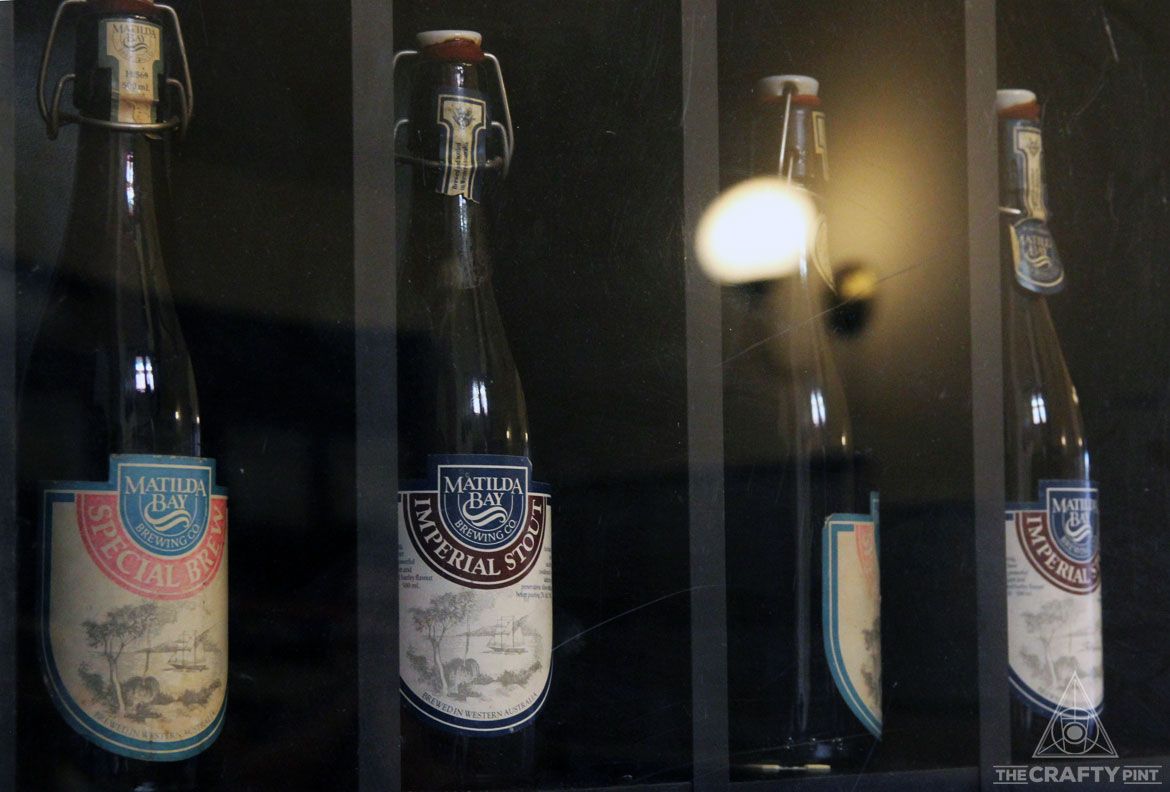
Inspired by time spent in the UK and Europe, and visits to some of the US’s fledgling craft breweries, Sexton, along with hang-gliding mates from university, Garry Gosatti and John Tollis, felt compelled to rejuvenate Australia’s bleak beer landscape. In 1984, they first turned Fremantle’s dilapidated Freemasons Hotel into the Sail & Anchor, complete with its own microbrewery, then built the original Matilda Bay Brewery, backed by colourful entrepreneur Peter Briggs, before establishing venues across Australia and challenging many accepted norms in the industry.
Blair Hayden returned from the UK and started pouring English-inspired ales at the Lord Nelson in The Rocks, thus kickstarting three decades and counting of brewing at one of the finest pubs in Australia. Geoff Scharer, who died in 2012, began brewing Scharer’s Lager at Scharer’s Little Brewery at the George IV Inn in Picton, New South Wales. And, in 1988, American brewmaster Chuck Hahn opened Hahn Brewery in the Sydney suburb of Camperdown and began brewing an authentic pilsner called Hahn Premium.
Other small enterprises sprung up elsewhere but, of those to commence brewing in the 1980s, only those mentioned above and Grand Ridge in Victoria, which started brewing in 1989, are brands that continue to this day, with Matilda Bay left by its owners to become currently a pale shadow of what it once was and could potentially have been.
Problems such as under-capitalisation and poor or inconsistent product meant that many ventures in this first wave of Australian craft breweries were short-lived. Matilda Bay was bought by Foster’s at the start of the 1990s, and Hahn was snapped up by Lion Nathan (now Lion) in 1993, with the Camperdown site renamed the Malt Shovel Brewery and becoming the home for the James Squire range of beers under Chuck Hahn’s guidance. While CAMRA enjoyed success in the UK and the American craft beer revolution took hold, Australia appeared to have suffered a false start.
That said, Coopers was on the rise. The brewery began producing draught beer for the first time in the 1980s, a decade that also saw the company take ownership of several hotels through which it was able to sell its beers, a move that mirrored the approach the first iteration of Matilda Bay had taken to retail so successfully. A handful of imports from Europe and North America were becoming available to those who wanted to hunt them down and, with Matilda Bay and James Squire offering alternatives (albeit alternatives that were still owned by major breweries), there was a semblance of choice.
A tiny number of breweries that still operate to this day did open in the 1990s: Last Drop in the Perth Hills and Bootleg Brewery in Margaret River, for example. But it was not until the end of that decade that microbrewing in Australia began to grow in earnest. In the last years before the millennium, some of the most respected names in craft beer in Australia today released their first beer: Mountain Goat in Melbourne, Nail Brewing in Perth, and Holgate Brewhouse in Woodend, Victoria.
Perhaps the biggest single moment that kickstarted the second wave of craft brewing in Australia, however, was an echo of the very first. Phil Sexton, who had returned to his first love, wine, and spent time in the US working with friends at BridgePort Brewing Company where he’s credited with designing the first American IPA, was enticed back to Australia by former colleagues from Matilda Bay. Nic Tromboli and Howard Cearn saw an opportunity to start another brewery in WA, driven in part by displeasure with the direction in which Foster’s had taken their earlier creation.
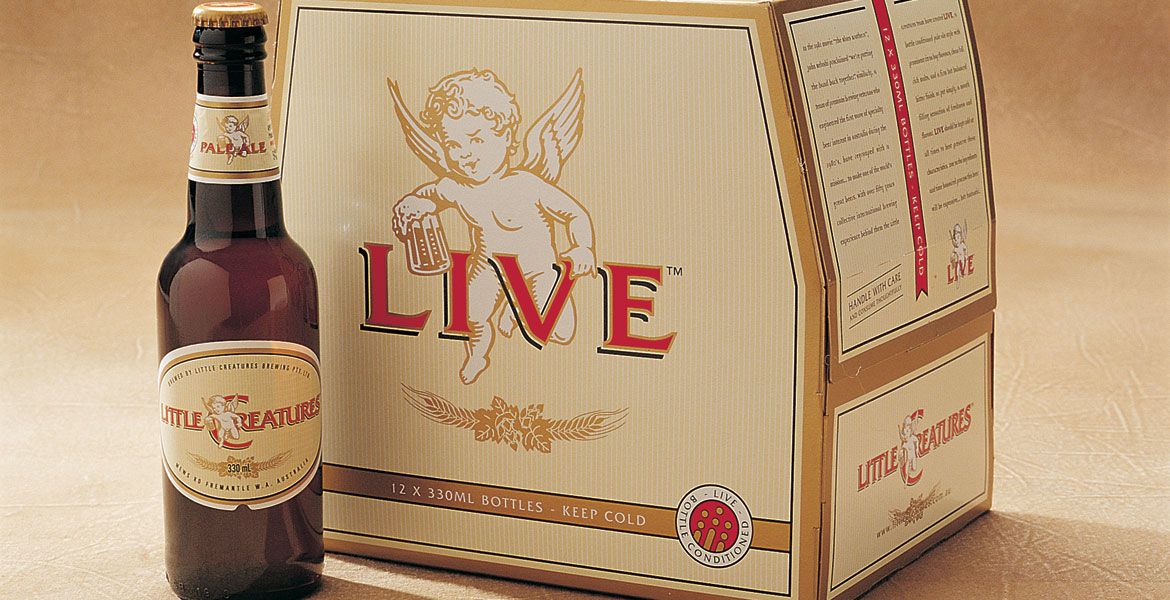
They opened Little Creatures on the Fremantle waterfront, a spectacular venture in a building that formerly housed a crocodile farm. It took the brewpub concept to another level in Australia and also brought with it a beer that was to revolutionise the country’s drinking habits. Originally called Little Creatures Live, then renamed Little Creatures Pale Ale, this US-inspired ale featured the wonderfully aromatic, citrusy hops of the Pacific Northwest and was based on the hoppy pale ales and IPAs that were leading the charge for American craft brewers, tweaked by Sexton and fellow winemaker Janice McDonald for the Australian palate.
While growth of craft beer remained steady rather than spectacular and its market share was negligible, the early years of the new millennium saw a steady growth in the number of breweries, many opening up in popular wine and tourism regions – among them some now recognised as among the best in the country, including Feral Brewing in Swan Valley and Bridge Road Brewers in Beechworth.
Often they were opened by people who had experienced beer epiphanies while travelling through the US, the UK or Europe, and decided to change careers. But there were also those who were starting to view small-scale brewing as a viable career option. The number and diversity of quality imports available in Australia continued to rise too, opening palates and minds to the possibilities inherent in beer.
Despite this, there were plenty who doubted beer could follow the same trajectory enjoyed by Australian wine from the 1980s onwards. Commonly tagged "boutique beer" (a term that could not be less appropriate for describing the ethos or, indeed, the personalities, of many involved in the Australian microbrewery scene and one which has now, thankfully, almost disappeared), it was frequently written off as a fad that would die a similar death to the first wave.
The doubters had plenty of ammunition. It was a challenge for these breweries to find venues that would stock their beer, while a lack of brewing knowledge and ordinary equipment contributed to beer of a quality that was variable at best for many of the start-up breweries. Even a few years ago, you could find breweries that were seemingly founded on a belief that their point of difference and location in a popular tourism region would be reason enough for people to visit and drink their beers – quality be damned. Indeed, one suspects some owners figured (with good reason) that Australian beer drinkers wouldn’t know what many of the styles of beers they were claiming to brew should taste like and thus wouldn’t know whether they were good or bad. As long as it tasted "different", it might be enough.
However, despite the naysayers, grow it did. What was increasingly being tagged "craft beer" was taking off in many other countries. Information on techniques, new beer styles, new ingredients and more was being shared freely on the internet, giving brewers unprecedented access to a wealth of previously unavailable or hard-to-source information. In Australia, there was also a vibrant home-brewing culture developing. And a handful of visionary bar owners realised what was happening and resisted the temptation to take lucrative contracts or deals from the major breweries and instead operated as free houses, filling their taps with beers from these small local breweries. Suddenly, brewers had a means to get their beer to the public even if they didn’t have a cellar door or brewery bar of their own.
Gaining Traction
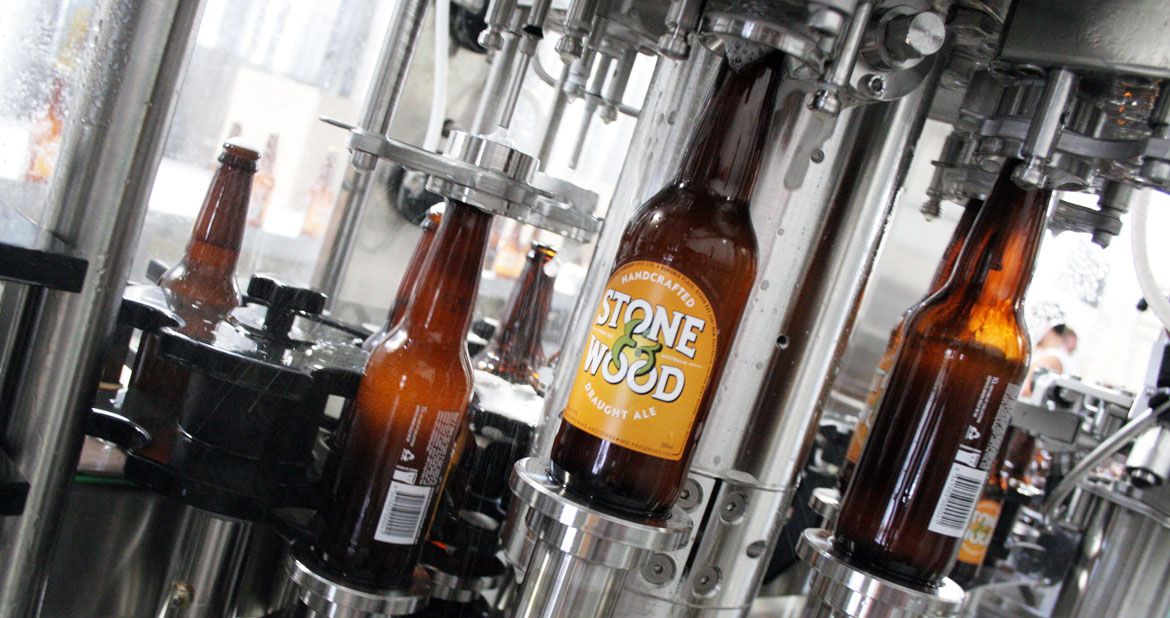
As the availability of craft beer grew, so did the breadth of styles available either by import or from local breweries. Standards improved and, as beer drinkers became more knowledgeable about what various beers should taste like and started expecting more, there was less room in the market for substandard beers from local breweries. A handful of breweries closed, but in most cases they just began making better beer or brought in new brewers who could. By 2010, an industry that had been growing steadily for a decade began expanding faster and faster. Since then, growth in every aspect has been little short of phenomenal. It is not uncommon to find breweries reporting 100 per cent year-on-year growth, even several years into their existence. At times, it feels like there must be a small flotilla of ships making its way to Australia all year round, bringing nothing other than stainless steel fermenters and brewhouses from Europe, North America and China to satisfy Australians’ voracious appetite for better beer.
As sales for many of Australia’s biggest brands continue to falter and overall beer consumption steadily declines, the clamour for the best local beers is so high that many brewers struggle to meet their own state’s demands, and have to bat away requests from eager bar owners and drinkers elsewhere. It is not uncommon to ask a brewer how things are going since their new, larger setup was installed and discover they are hitting capacity again and are bringing forward plans for the next stage of expansion. Some brewers have been forced to find alternative means of brewing their beer, outsourcing production of some of their main lines, at least in packaged form, to external operators that specialise in brewing for other businesses.
The Third Wave
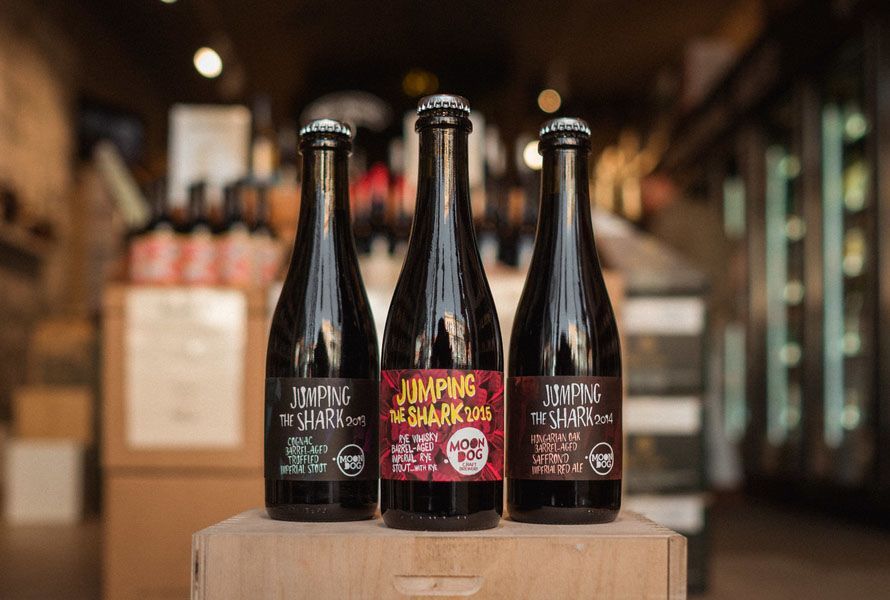
When you consider that the brewers who kickstarted the second wave referred to above are, for the most part in rude health, either sitting comfortably on what they’ve built or, more often, continuing to build and innovate, it might seem odd to talk of a third wave. Yet there has been a notable change of direction – or at least the addition of some delightful tangents – within the Australian beer industry in the past five years.
The brewers I refer to are those who entered the industry with little regard for perceived norms, in their own way doing what Phil Sexton, Chuck Hahn, Geoff Scharer and their ilk did in the 1980s, but in a rather more twisted and experimental manner. Inspired by the ‘no rules’ ethos of many American brewers, they ignored, and continue to ignore, what was seen as the sensible approach – essentially, create a core range featuring something approachable like a golden ale and back it up with something fruity (a wheat beer), something a little hoppy (pale ale) and something darker (porter or stout) – and instead did it their own way.
Sure, by 2010 or 2011, there were already many breweries across Australia producing innovative and often unusual beers as limited releases, but no one for whom that was the very raison d’être driving their output from day one. Kickstarting this third wave as much as anyone was Moon Dog. Based in a small industrial unit in Abbotsford, equidistant between CUB’s headquarters and a brothel, their first official releases were a barrel-aged wild black ale featuring cherries called Perverse Sexual Amalgam and a cognac barrel–aged imperial IPA called Skunkworks. Today, the two brothers and their mate that started the brewery have deviated a little towards the norm. They opened 2016 by adding a pale ale and hoppy dark ale to their core range. Old Mate and Mack Daddy joined the 5 percent ABV hoppy lager Love Tap to give them a trio of still colourfully conceived and presented yet rather more “normal” beers, but they continue to push the boundaries with most of their beers, their names and their labels.
In 2015 alone, with a former winner of the Champion Australian Brewery title added to the brewing team, they released a beer that pulled off a fine impression of champagne without using anything other than beer’s four main ingredients (Bad Boy Bubbly), a pair of beers sold as a two-pack designed to be blended together to form their take on an Old Fashioned cocktail, and a fruit stout that featured 5,500 Redskin lollies and was delicious.
Others combine the production of beers of broad appeal with those of a more idiosyncratic bent; none more so than Boatrocker Brewery. The Braeside based company launched initially as a contract brewer, with beers such as the Alpha Queen pale ale and Hoppbier pilsner brewed under license. Since opening its own brewery, it has embarked on an ambitious barrel program: a two-pronged one that sees the brewers ageing big beers such as imperial stouts and barley wines in whisky and bourbon barrels while developing a large stock of various funky and sour beers inspired by Boatrocker founder Matt Houghton’s beloved Belgium.
Not too far away in Melbourne, La Sirène has its own barrel and coolship program up and running and is, like Tasmania’s unique Two Metre Tall, exploring spontaneous fermentation – where beer is fermented only by the wild yeasts present in the local atmosphere rather than any house or packet yeast. Even White Rabbit, the younger sibling to Lion-owned Little Creatures, opened its own barrel room in Geelong in 2015 and is producing some sour styles.
It is not just the beers available that are changing. As more young brewers look to turn their dreams into commercial reality, they are seeking ever more creative ways to break into the industry. There used to be pretty much three choices: find half a million dollars or more and build your own brewery; come up with a brand and pay someone else to brew for you; or cobble something together from repurposed milk and cosmetic vats or tanks intended for winemaking.
More recently, however, some have branded themselves as "gypsy" and "nomad" brewers – those without their own equipment who travel from brewery to brewery, creating their beers on other people’s gear.
There are others exploring another avenue too. A small number of "communal breweries" have opened. Some created by design, others more by accident, they are typically owned by one brewery that invites other brewing companies to buy their own fermenters to be installed alongside their host’s. The brewing companies brew on the host brewery’s equipment but have their own space in which to ferment and condition beer without tying up their host’s capacity.
Young Henrys in Newtown once offered space to The Grifter Brewing Company, allowing three talented young brewers a foothold in the market they otherwise would not have been able to afford before they both outgrew each other and Grifter set out to build their own home in Sydney’s inner west. Cavalier in Melbourne’s west has welcomed a horde of brewers to its warehouse, with many of them since leaving to open their own brewery having established their brand. Indeed, in a couple of cases, brewers who were part of the crowd at Cavalier have since paired up, such as Exit Brewing, whose founders now brew at KAIJU! In Adelaide, Big Shed Brewing was set up with this approach in mind; the owners ‘rent’ their brewery and fermenters to other brewing companies, although, as with Young Henrys and Grifter, Big Shed and their main customer Mismatch’s success means they’re outgrowing each other.
Collaboration brews, having risen in prominence rapidly since 2010, are now utterly commonplace. Brewers still collaborate with each other, often for special events, but also brew with bands, artists, farmers, writers, roasters, venues, beard gum makers – you name it, if someone’s game and has an idea or an ingredient to offer then there will be a brewery happy to work with them.
Specialty beer bars, at which the range and presentation of beer is the centre point of the experience, remain an intrinsic and increasingly commonplace part of the beer world, so much so they’re almost past being worthy of comment. What is worthy of comment is where they can now be found, with excellent pubs and bars serving a multitude of fine beers found in country and coastal towns as well as the major centres.
Complementing that, it’s becoming increasingly common for hotels and pubs you would never tag a “specialist beer bar” to dabble in craftier waters. With Lion, in particular, having been smart in building a diverse portfolio this might be little more than beers from the likes of James Squire or Little Creatures, which are still a step or two away from XXXX Gold and Pure Blonde. But many are also being won over by smaller, independent brewers too, publicans dipping their toes in the water, discovering there are people looking for something different in all corners of the country and that they can make greater margins on craft beer too.
And it’s here that smaller brewers would be wise to focus much of their attention in building their own – and their peers’ – audience in the coming years. Dedicated beer venues will take their beers, but likely rotate them one or two kegs at a time and will be selecting from scores of local brewers plus a growing number of often excellent imports. With more venues moving away from the strict contracts signed with the country’s major players and hotel owners increasingly aware that there’s something else on offer and it’s not going away, it should be imperative for small brewers to be hitting up and befriending every beer selling outlet in their locality, no matter how unlikely it might seem for them to take a chance on their products. After all, if there are no rules when it comes to brewing, why should there be in terms of where they should be sold?
More Than Beer
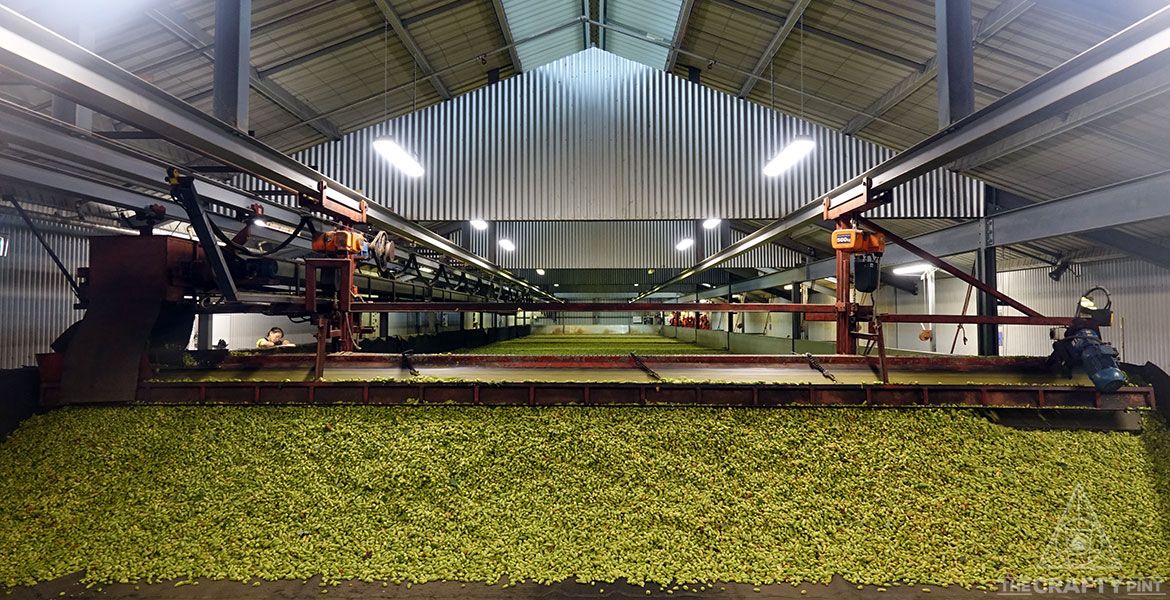
It is not just Australian brewers making their mark either. Over the past decade, Hop Products Australia, the country’s largest grower of commercial hops, has changed tack significantly to focus on creating a greater number of aroma and flavour hops. Some, particularly Galaxy and Ella, are in great demand the world over. Victorian grower Ellerslie Hop added its own new aroma hop, Melba, in 2015 and has a second waiting in the wings.
The beer festival has come into its own too, and not those of the large Oktoberfest bent either, which are typically driven by misogynistic advertising and the swilling of as much imported lager as possible. Where once there was a small number of these one– or two-day beer festivals in the annual calendar, now – particularly in summer – they are found all over the country, the biggest of them attracting thousands of attendees.
The beer week also continues to come into its own. Just as WA was the first state to have craft beer, it was the first with a beer week, although the one operated by the state’s brewing association has tended to be a small, niche affair compared to those that have come later, even if it is building year on year.
Yet it was the arrival of Good Beer Week in Melbourne in 2011 took things to another level. Run in conjunction with the long-running Australian International Beer Awards and now also incorporating the huge Great Australian Beer SpecTAPular (GABS) within its nine days, it has become an event with global reach, regularly enticing brewers from all over the planet to Australia for an array of events – 270 of them in 2016 – celebrating beer and beer culture in every way imaginable. It has spawned city- and state-based beer weeks in Sydney, Brisbane, Canberra and Hobart, as well as the five-day Good Beer Wheaty in Adelaide, while GABS has become a touring affair, taking its converted shipping containers from which pour 120 brand new beers each year from Melbourne to Sydney and Auckland in 2016.
The combination of so much growth in so many areas, not to mention the businesses developing as a result of craft beer’s rise – small maltings and hop farms, specialist tap handle and decal producers, for example – makes for a potent brew. The landscape has never been as colourful or delicious, particularly as standards, for the most part, rise in tandem with sales.
The landscape also has a more even spread of breweries and beer venues now too; in the past two years alone, things have changed markedly. Melbourne and Victoria long led the way, before the slumbering giant that was Sydney finally came alive, aided by a rising number of small breweries and a thriving small bar scene; indeed, Sydney’s inner west is the most populous area in Australia for brewery venues.
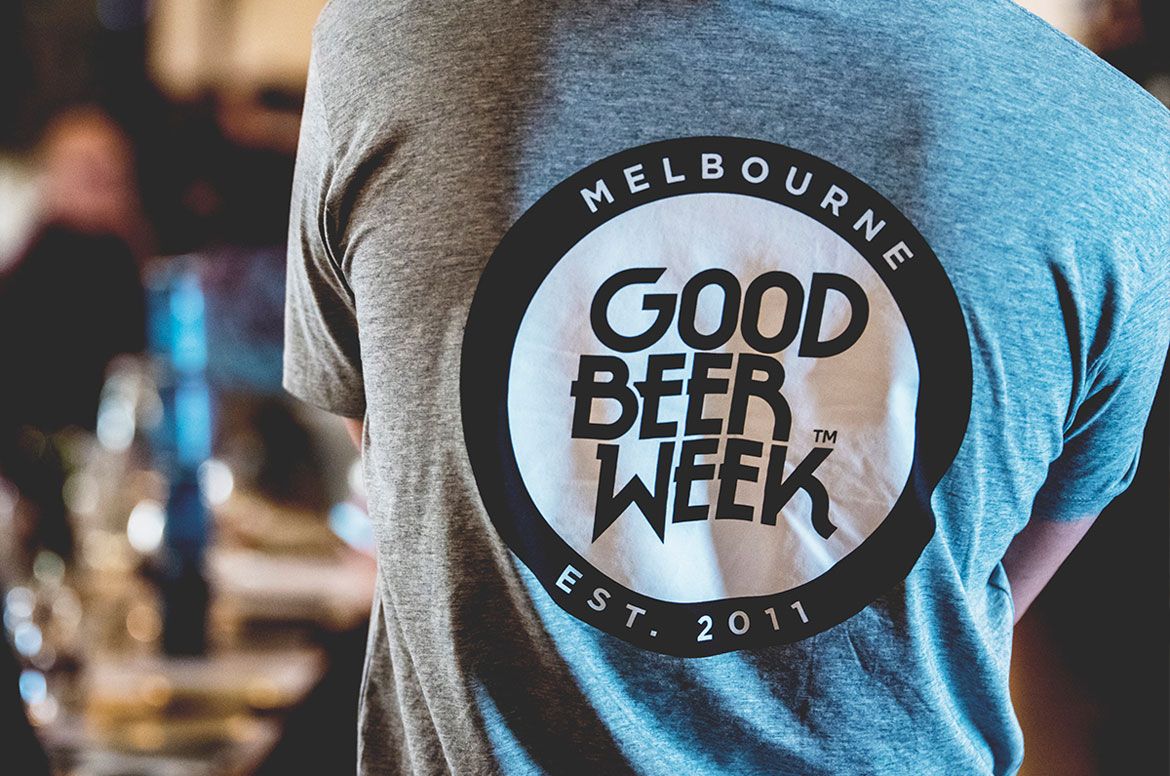
As recently as 2012, there were those that questioned whether Brisbane would ever embrace craft beer but it now has its own independent, weeklong beer festival, Brewsvegas, while the Gold Coast held its own beer week in 2015 and will have three significant breweries operating by the time you read this. The Tasmanian brewing industry was comprised of the same eight or nine names for years but now has twice that number, with Hobart in particular developing quite a buzzing little scene. South Australia has erupted too, with a big increase in breweries matched by venues supporting them since scores of new small bar licenses were granted.
Out west, the state in which the contemporary beer industry had its first stirrings has welcomed a few new players into what was already a populous brewing state and, finally, Perth has a handful of beer venues worthy of the name. The country’s capital is increasingly well served too, with the legendary Wig & Pen safely ensconced in a new home, its trophy winning former head brewer, Richard Watkins, now running the superb BentSpoke with his partner Tracy Margrain, and new brewing company Pact Beer joining Zierholz to make four. In the Northern Territory, One Mile Brewery is the lone microbrewery although Darwin does have a small number of venues offering a choice of beers now.
Yet challenges remain for those at all levels of the beer world.
The country’s long dominant twosome, Lion (owned by Japan’s Kirin) and CUB (owned by SABMiller and, maybe by the time of publication, part of the behemoth that is AB InBev), continue to see sales of their flagship brands struggle and face a future in which such beers will probably never again command the monopoly they enjoyed throughout much of the twentieth century.
Other major players are looking to flex their muscles too. Asahi’s purchase of Melbourne’s Mountain Goat on the eve of the latter’s 18th anniversary sent shockwaves through the industry. It should bring the Japanese giant more success than their prior purchase of Cricketers Arms, even if the initial period following the sale saw many of Goat’s independent stockists take their business elsewhere. The Japanese brewer has approached other storied local names too so don’t be surprised if others follow Goat’s lead.
Its purchase of Goat and Lion’s acquisition of Little World Beverages in 2012 (which owned Little Creatures and White Rabbit) were, at time of writing, the only big brewery buyouts of any significance in Australia. Elsewhere, particularly in the States, they have been happening at least once a month, with some phenomenal prices paid and some big names in the craft beer world, including those who played upon their outlaw status, succumbing to the lure of the big pay cheque. Without fail, their new owners claim to have nothing but love and respect for the businesses they’ve acquired and have the means to help them grow; how the stories will develop and the impact on those who either aren’t offered a cheque or who choose to remain independent is one of the more fascinating aspects of the near future for anyone with an interest in beer and business.
Back in Australia, Lion and CUB have been joined by others with deep pockets and global reach. The joint venture between Yellow Tail wine manufacturer Casella and Coca Cola Amatil (CCA), Australian Beer Co, continues to look for ways to break into the market in a big way. Neither the Arvo lagers or Alehouse beers cut through, but Yenda, the brand they present as a cutesy little rural operation, is more visible and the company started 2016 by launching a range of Yellow Tail beers.
Add in Adelaide’s family brewery Coopers and the home brands from the country’s dominant retailers (Steamrail, Lorry Boys and 3 Pub Circus from Coles; Sail & Anchor and John Boston from Woolworths, which also has a 25 percent stake in Gage Roads) and you’ve got a fair number of players with significant resources and the ability to shape what the public sees on shelves.
And then you have the 300-odd smaller, independent players. They include a handful that are becoming truly national, such as Stone & Wood, 4 Pines and Feral, far more that operate on a regional level, plus all manner of brewpub and locally focused businesses. For all to succeed, they need to keep chipping away at the market share of the big breweries and to tell and sell the story of why they should be supported – provenance, integrity, independence, flavour and so on – rather than engaging in internecine warfare, intentional or otherwise.
Their collective fight to see craft beer secure a solid foothold in Australia may be won, but other fights such as those concerning excise tax or the inflated cost of ingredients and supplies continue, while yet more take shape. Above all, they need to ensure they are brewing to the best standard they can then keep improving on their best standard because, while the audience is going to grow, it will have more choice and those who fail to deliver will be shunned, allowing natural selection to weed them out.
As for the size of that audience, it is without doubt bigger than the official figures released by survey companies claim. Their measures fail to take into account a huge chunk of sales, including those direct from breweries, independent retailers, such as specialist bottleshops and the hundreds of pubs and bars selling little other than beer from small producers. One industry stalwart who has been operating in the craft beer world since well before the term craft was applied told me he believes the true figure for craft beer as a percentage of the beer market in Australian to be closer to 10 percent than the four often cited. That is, of course, if you include brands owned by the multinationals, such as Matilda Bay, Yak Ales, James Squire and Little Creatures.
Even without those he estimates the percentage share for which small, independent Australian brewers is responsible is far higher than official stats state, while growth among small, independents surely dwarfs the low double digit figures often cited. However, with the main national body representing smaller brewing companies in Australia, the Craft Beer Industry Association (CBIA), unable to persuade its members to share production figures, nailing an accurate figure would appear to be some way away.
What’s certain, however, is that it is growing. And that, however, you look at the beer industry in Australia today it is exciting, thrilling even, with all the highs and lows that can accompany any exciting or thrilling moment.
Any questions over the size of the industry are now better focused on how much of the market the still dominant major brands will lose and how big the loosely defined craft sector will grow; will it stop at ten percent, 20, 30? And who will own that ten, 20 or 30 percent?
Will it be the major players wearing crafty clothes? Certainly, Lion above all others has been smart and, with James Squire, Kosciuszko, Little Creatures, White Rabbit and Knappstein, not to mention Emerson’s in New Zealand, is well positioned to dominate.
How much room is there for bigger independents who want to play on a national scale? Will enough of the really small operators find their niche or be able to build up a strong and well resourced enough business to survive in more competitive waters. And will the term “craft beer” even mean anything anymore?





